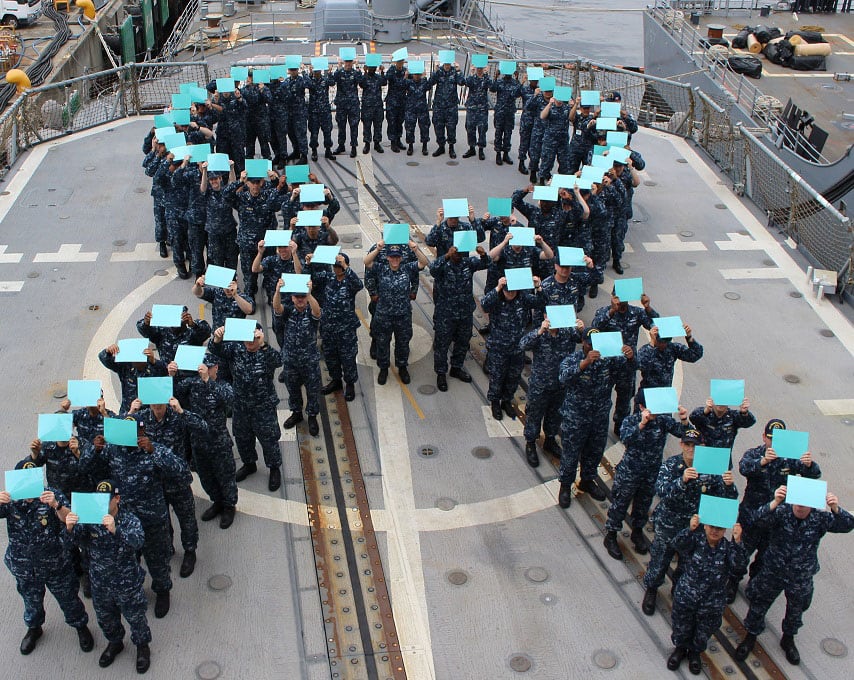Troops in the Department of the Air Force can now access the same resources to deal with sexual harassment as they would for sexual assault under a recent policy change.
Airmen and Space Force guardians who are sexually harassed can file a confidential report to their local Sexual Assault Prevention and Response office to get support from a victim advocate or response coordinator. The move brings sexual assault and harassment reporting under one roof as part of a broader slate of reforms to help victims.
“Sexual harassment does not reflect who we are as an organization and has no place in the military,” said Brig. Gen. Debra Lovette, head of the Air Force’s personal and professional resilience initiatives. “For service members victimized by this harmful behavior, it can be crippling, preventing them from coming forward out of fear of further harassment or the perceived lack of support from their leaders or coworkers.”
RELATED

Unwelcome sexual advances, requests for sexual favors, quid pro quos and other actions or comments that make someone uncomfortable can constitute harassment.
Previously, sexual harassment complaints were handled through Equal Opportunity offices. But separating those reports from formal sexual assault allegations limited the help victims could receive, and complicated the process of punishing perpetrators.
The policy was revised following recommendations from an independent panel tasked with studying how the Pentagon addresses sexual misconduct, as well as legal changes enacted in the fiscal 2022 National Defense Authorization Act. The update took effect Sept. 30.
“Service members may choose to make an unrestricted report with the SAPR program to receive victim advocacy services such as crisis intervention, safety assessments and counseling referrals,” the Air Force said. “They may also file a separate military equal opportunity complaint through the EO office.”
The EO program will continue processing and tracking those harassment complaints as well, the Air Force said.
RELATED

Troops can file sexual harassment complaints that are restricted, meaning the details are kept confidential, or unrestricted. Both options let troops describe their experiences to sexual assault response coordinators or victim advocates and get help.
Unrestricted reports trigger investigations into the allegations; restricted reports do not. Sexual assault prevention and response staffers also cannot notify the service member’s commander or their local EO office about a restricted report without their written consent or in cases of clear and present danger to their health and safety.
“However, when the victim reports the crime to someone in the chain of command, a restricted report is no longer an option,” the Pentagon’s SAPR office noted.
Nearly one-third of active duty female troops reported being sexually harassed in 2021, up from 24% in 2018, the Pentagon reported in August. The percentage of active duty men who said they were sexually harassed — about 7% — remained the same in that time frame.
RELATED

The number of sexual harassment reports also rose from about 1,800 in 2020 to 3,200 in 2021, the Pentagon said.
“Most service members identified the alleged offenders as men in their unit who are the same rank as the victim,” the Pentagon said. “However, nearly one-quarter of women (24 percent) and 19 percent of men identified at least one alleged offender as someone in their chain of command.”
Of the people who reported being harassed or assaulted, about 40% of women and nearly one-third of men were sexually harassed and assaulted by the same alleged offender, DOD added. And of those, 8% of women and 5% of men reported harassment prior to an assault.
“The odds of experiencing sexual assault increase threefold for women and tenfold for men who also indicated experiencing sexual harassment in the past year,” DOD added.
Rachel Cohen is the editor of Air Force Times. She joined the publication as its senior reporter in March 2021. Her work has appeared in the Washington Post, the Frederick News-Post (Md.), Air and Space Forces Magazine, Inside Defense, Inside Health Policy and elsewhere.




